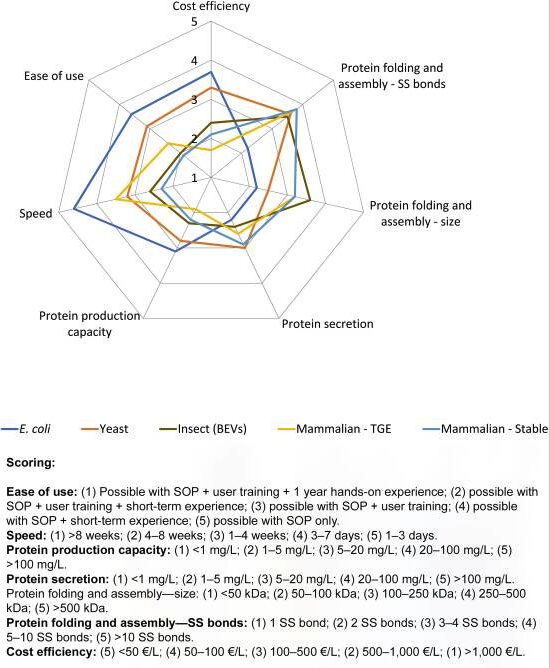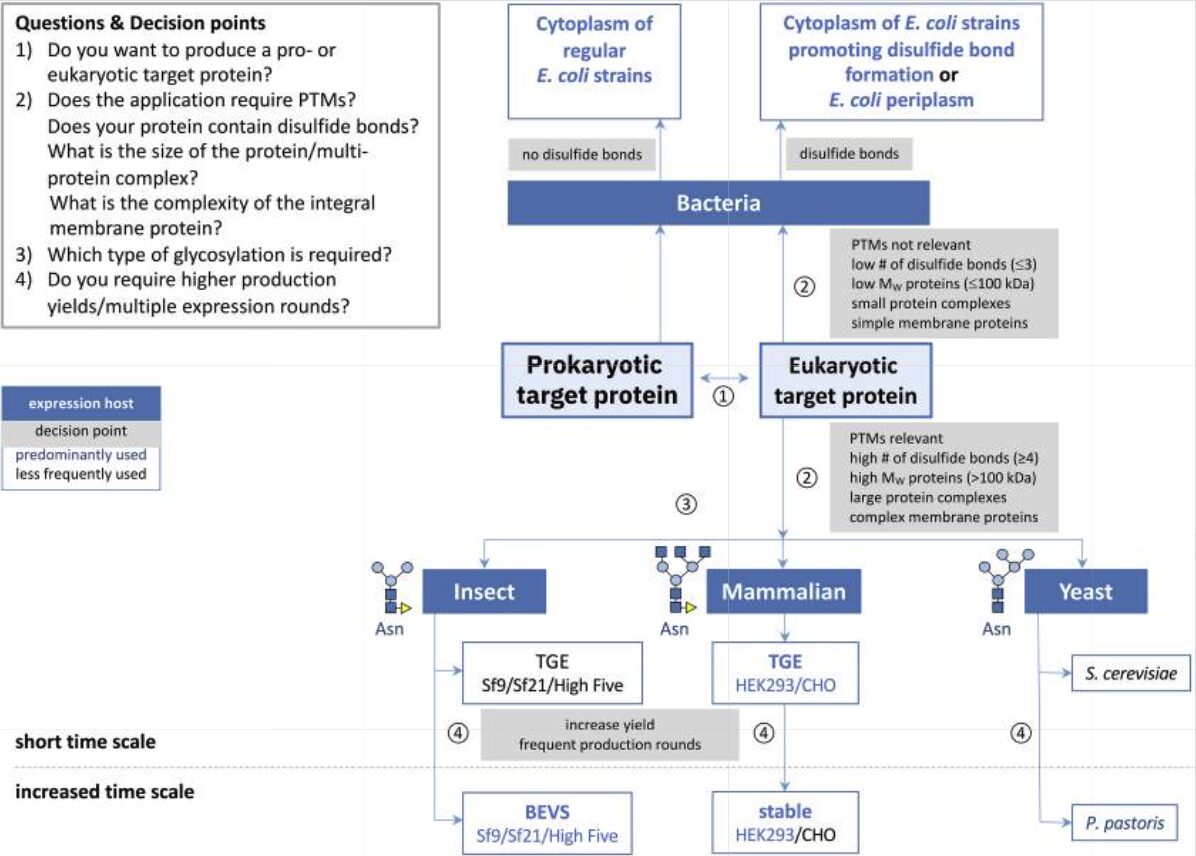7 November 2024
Multicellular vs single cell gene expression systems

When selecting the right gene expression systems for producing a particular protein, one of the most significant decisions researchers face is choosing between a multicellular or single-cell system. The complexity of the protein, host cell compatibility, and overall project goals all influence this decision.
While single cell systems are an industry standard, multicellular systems are emerging as a viable alternative. Specifically, to optimize the production of complex or ‘impossible’ enzymes which are necessary in industries like biopharmaceuticals, cultivated meat, and cosmetics.
In this post, we’ll dive into the key differences between multicellular and single cell gene expression systems and what use cases they are best suited for.
Understanding gene expression systems
Before comparing these systems, it’s essential to understand what a gene expression system is. In simple terms, it refers to the combination of host cells and transcriptional processes used to produce a gene product, such as a protein. The system includes the tools for RNA transcription, translation, and subsequent post-translational modifications, ultimately resulting in a functional protein.
Gene expression systems are crucial for various applications, from mRNA production to gene sequencing, but the choice of system impacts protein quality, yield, and functionality.
“Currently, the most commonly used protein production systems are E. coli, yeast, mammalian cells, and insect cells. In mammalian cells, both TGE and stable cell lines are frequently used, whereas in insect cells baculovirus-mediated expression is the predominant method of choice.” – National Library of Medicine
So, how do multicellular and single-cell systems compare?
RELATED: Recombinant enzymes vs native enzymes
Single cell gene expression systems
Single cell systems typically refer to those based on yeast, bacteria, or other unicellular organisms. They offer a straightforward approach to gene expression and have long been a staple in research labs.
Pros of single cell systems:
- Simplicity: with only one cell type, the system is easy to manipulate.
- Cost-effective: these systems tend to be less expensive, making them ideal for routine protein production.
- Fast growth rates: single-cell organisms like E. coli or yeast can rapidly produce large quantities of recombinant proteins.
- Suitable for simpler proteins: single cell systems work well for proteins that don’t require complex folding or extensive post-translational modifications.
Cons of single cell systems:
- Limited protein complexity: These systems struggle to express more complex proteins or those requiring significant post-translational modifications, such as glycosylation.
- Lower protein functionality: The lack of eukaryotic machinery in some single-cell hosts can lead to misfolded proteins or reduced activity.
Use cases
Single cell gene expression systems are highly effective for producing enzymes or proteins that don’t demand the complexity of multicellular systems. For example, yeast or E. coli are commonly used for producing enzymes in bulk for industrial applications, but they might not be ideal for producing therapeutic proteins requiring specific modifications.
Multicellular gene expression systems
Multicellular expression systems involve more complex organisms, such as insects or mammalian cells, which allow for the production of more intricate proteins.
Pros of multicellular systems:
- Higher complexity: These systems can handle proteins that require complex post-translational modifications like glycosylation, phosphorylation, and proper folding.
- Mammalian-like post-translational processes: Multicellular systems often closely mimic human biological processes, making them ideal for producing biopharmaceuticals or enzymes for gene therapy.
- Better protein functionality: The proteins expressed tend to be closer in functionality to their natural state.
Cons of multicellular systems:
- Higher costs: These systems are often more expensive due to the complexity of maintaining multicellular organisms.
- Longer production times: Growing multicellular organisms or maintaining mammalian cell lines can be time-consuming compared to single-cell systems.
Use cases
Multicellular systems excel in applications requiring high-quality protein production, particularly for complex proteins used in therapeutic treatments or cutting-edge research areas like mRNA production and gene sequencing. Cocoon’s platform, for example, has proven instrumental in creating enzymes crucial for next-generation RNA polymerases and transcription factors involved in gene expression processes.
The below graph, adapted from a peer-reviewed study, illustrates some of the technical differences between common gene expression systems, including single and multicellular systems:

Choosing the right system
So, how do you choose between single cell and multicellular systems? The decision ultimately hinges on your research objectives and the nature of the protein you’re trying to produce. Here are some factors to consider:
- Protein complexity: for proteins requiring extensive post-translational modifications, multicellular systems are likely your best bet. Single-cell systems work for simpler proteins.
- Speed: if you need a quick turnaround, single-cell systems like E. coli might be the way to go. Multicellular systems, while more robust, generally take longer.
- Cost: single-cell systems are generally more cost-effective. However, when producing complex, high-value enzymes, the superior quality of multicellular systems might justify the higher price.
- Application: for therapeutic uses, the closer-to-human post-translational modifications in multicellular systems (e.g., mammalian or insect-based) can be essential for function and safety.
Here’s a quick decision map to help you choose the most suitable system:

Learn more about why recombinant enzymes are the future of life sciences R&D
Why multicellular is the choice for complex enzyme production
Choosing between multicellular and single cell gene expression systems comes down to the complexity of your project, cost, and time constraints. While single cell systems offer simplicity and speed, multicellular systems—like those offered by Cocoon—are indispensable for producing the complex, high-functionality proteins essential for modern R&D, particularly in mRNA production and gene sequencing.
At Cocoon Bioscience, we specialize in producing recombinant enzymes and growth factors using multicellular gene expression systems. Our CrisBio® system uses insects in their chrysalis stage as natural bioreactors. This approach taps into the full potential of multicellular systems, allowing us to produce difficult or even ‘impossible’ enzymes that traditional single-celled platforms fail to.
Learn more about how Cocoon can support your enzyme production needs.
Advance R&D with multicellular systems
Our insect-based platform offers a uniquely efficient and scalable solution for producing enzymes. The advanced capabilities of CrisBio® ensure that the proteins we produce maintain the necessary modifications and functionality required for cutting-edge research and development.
Ready to learn more? Check out the Cocoon Bioscience blog for the latest updates on how our gene expression systems are paving the way for future innovations.


